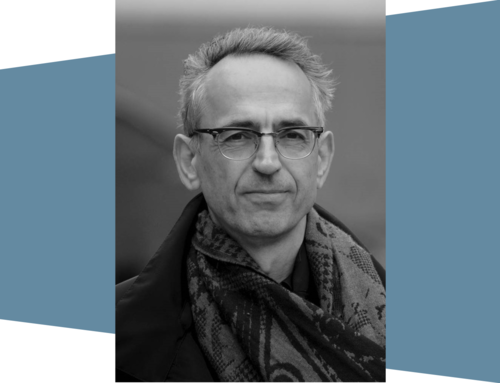Winfried Pauleit
Winfried Pauleit is Professor of Film Studies at Bremen University as well as the head of the lab “Film, Media Art and Popular Culture” at the Centre for Media, Communication and Information Research. Prior to this, he taught film studies at the Freie Universität Berlin and worked as a researcher in the department of art and design history at the Bergische Universität Gesamthochschule Wuppertal. Winfried Pauleit’s research focuses on the history and aesthetics of film, on film education and on film as a medium of scientific research.
His publications include Audio History des Films. Sonic Icons – Auditive Histosphäre – Authentizitätsgefühl (2018, with Rasmus Greiner and Mattias Frey), „Sonic Icons and Histospheres: On the Political Aesthetics of an Audio History of Film“ (2016, with Rasmus Greiner, in: Leif Kramp et. al. (ed.): Politics, Civil Society and Participation. Media and Communications in a Transforming Environment) and Reading Film Stills. Analyzing Film and Media Culture, (2015, e-book).
Three Quick Questions:
In a few words, can you tell us about your current research interest?
During my collaborative work with Mattias Frey and Rasmus Greiner on an "Audio History of Film" (2018) and particularly in my case study on Robert Siodmak's MENSCHEN AM SONNTAG (1930) and its depiction of a Berlin riverside, I stumbled on a particular modernist configuration of cinematic landscapes and human outdoor practices in the advent of synchronized film sound. This triggered my general interest in the aesthetics of cinematic landscapes, and the cultural practices of modernity. Hosting the conference "Green Cinema. Relations between Film and Ecology" at University of Bremen in collaboration with Sabine Nessel in 2022 was my point of departure to study cinematic landscapes including its pre-history in 19th century landscape painting but mostly focusing on modern and contemporary feature, essay and documentary films.
How do you relate the term poiesis to your work?
I don't refer directly to poiesis in my own writing on cinema. But in my understanding, the term summarizes practices of cinematic experience and the production of writing and debate on and around cinema. In my essay "We All Sit at the Editing Table: Towards a Politics of the Spectator" (2014), I analyzed Nanni Moretti"s CARO DIARIO (1993) as a key example of a cultural activity on the part of the spectator that goes beyond mere diary-keeping and takes place both in daydreams and on the street, an imaginary activity that is nonetheless close to reality. Yet it is also modern and self-reflexive, and can equally be linked to new media, for it is both interactive and social. Moretti communicates with actors, film critics, or even dead film directors, and in doing so practices a form of interactivity that takes place within the film itself, yet could just as easily do so outside it, as a cultural practice of strolling along the streets or daydreaming. This (cinematographic) form of social and aesthetic interactivity might be termed a politics of the spectator in the style of the politics of the auteur.
Which film or other audiovisual format has resonated with you lately and why?
Two films of this year's Berlinale: Olivier Assayas' HORS DU TEMPS (2024) and Alexander Horwath's HENRY FONDA FOR PRESIDENT (2024). Both films have a focus on biographies. Assayas' film can be described as a sort of autofiction set during the COVID-19-Pandemic that unexpectedly at a certain moment starts to reflect on landscape paintings while shooting an abandoned landscape garden. Horwath, however, grounds his biographical essay on Henry Fonda in landscape shots reflecting on American industrial history and its connectedness to the aesthetics and history of cinema.


